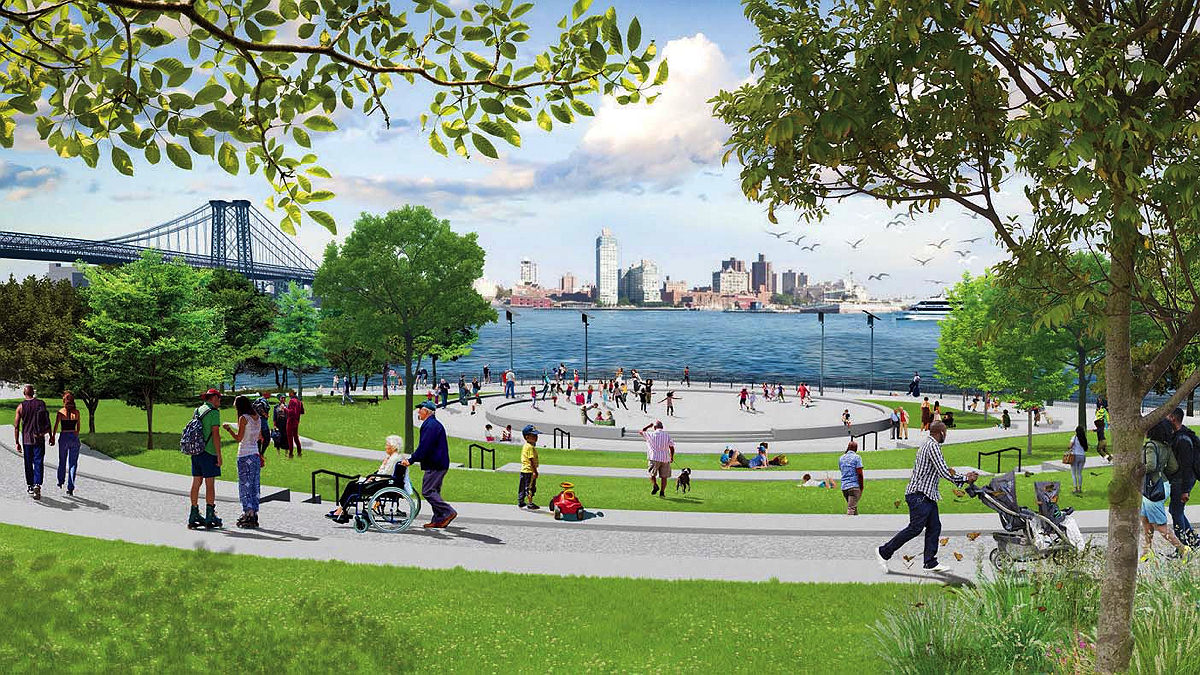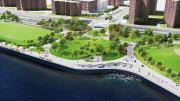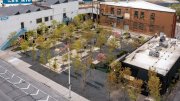At a time when Americans are divided by politics and algorithms, public spaces have the potential to bring people together. Libraries and town squares can be drab and uninspiring, or they can transform atomized strangers into neighbors, and those neighbors into a cohesive society. Even something as unassuming as a public park can bridge race, class, and cultural chasms, says Graduate School of Design (GSD) lecturer and architect Malkit Shoshan. The trick is in how they’re designed.
Last fall, Shoshan invited students in her project-based seminar, “Reimagining Social Infrastructure and Collective Futures,” to expand their conception of public spaces. A road can be more than just a surface that takes drivers from Point A to Point B, for instance. As the Jackson Heights neighborhood in Queens proved during the pandemic, closing a street for several hours a day can transform it into a peaceful promenade where children play, and big-city dwellers finally learn their neighbors’ names.
Now is the time to invest in the physical spaces that shape the way citizens interact, argued sociologist Eric Klinenberg during a GSD lecture last fall. He said Americans need better-designed social infrastructure—he popularized the term in his 2018 book, Palaces for the People—because “If the public sphere is organized like Twitter, we’re going to be at each other’s throats for the foreseeable future.”

The New York sea wall project will feature a skating rink, tennis courts, and baseball and soccer fields.
Project rendering by BIGNYC/Bjarke Ingels Group
But designing infrastructure that truly serves a community requires an architect to expand her “imagination of what is possible,” Shoshan elaborates. A public school can be planned solely as an educational institution, or it can be “reimagined as a catalyst for the growth of the community around it.” For instance, it could include a food pantry for food-insecure students and families—a project already under way in Cambridge Rindge and Latin School. “If we think about the school as an infrastructure that can support the household beyond the education of a child, we can relieve some stressors,” particularly those on low-income mothers, Shoshan says, because “the burden of feeding your family almost always falls on women.”
Social infrastructure is built for the future. A school can serve as a food distribution hub now and as a viable shelter against prospective floods or other climate-change-related natural disasters. As a response to the damage caused by Hurricane Sandy, for example, New York City is erecting a new sea wall on the Lower East Side—but in addition to that intended use, the wall will improve drainage and feature public parks and playgrounds for the community.
“Design briefs always prioritize the economy,” Shoshan says. They are “all about efficiency and reduction of cost, reduction of risk.” But pro-social design principles push architects to consider what else they could prioritize—how they might “reimagine the values that sit at the foundation of our built environment.” Shoshan’s designs begin with the understanding that the way a community constructs a public space both reflects its values and influences the way its people behave. As urbanist Charles Montgomery writes in Happy City, “The power of scale and design to open or close the doors of sociability is undeniable.” Communities are what they build, so to speak.
Shoshan throws open the doors of sociability by starting with the individual and scaling upward. One project in her class began with the observation that many elderly adults become isolated from the community because of mobility issues. The students proposed a model in which the community comes to them. The hypothetical “Care-a-Van” is a volunteer-supported converted bus that doubles as a mobile dining room and community hub. It travels among neighborhoods, bringing with it a calendar of events (like recipe-sharing and crafting) designed to reunite older adults and connect them with younger generations.
Although most social infrastructure projects, such as parks and libraries, are publicly funded, Shoshan says there is a role for the private sector, too. Coffee shops, barbershops, music stores, and bars should keep their community—not just their profit margins—at the heart of their design and operation. She articulates this balance using the principles outlined in Doughnut Economics, by economist Kate Raworth, whom she invited to lead a workshop with her design students. Raworth believes that the ideal society looks like a donut: the inner ring is a “social foundation” in which all citizens’ basic needs are met, while the outer ring is the “ecological ceiling” of what the planet can sustainably provide. Whether in economics or social infrastructure design, the sweet spot is the donut: the place where people and the planet both have what they need to thrive.
This all might sound utopian: elderly citizens sharing recipes with local youth, jaded New Yorkers transforming into sociable neighbors on carless streets, and children playing on a sea wall that mitigates the effects of climate change. But Shoshan asserts that her vision is achievable. “Social infrastructure is equally a product of imagination as it is of pragmatism,” she says. “Small, systemic interventions”—like setting aside a room in a public library for new mothers to nurse and chat during a particularly isolating time in their lives—“can make a huge difference.”
And these small changes lead to bigger ones. A society that values mothers enough to build them a nursing room might eventually provide more paid leave or free, quality childcare. The built environment can build a more welcoming society. “It’s not all a dream, you know,” says Shoshan. Rather, social infrastructure is a clear-eyed blueprint for a public sphere designed for the people, by the people.









